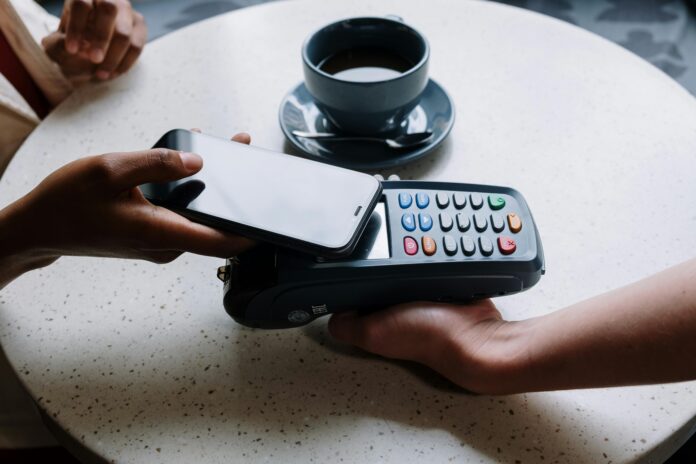Mobile Payment Systems have transformed the way we conduct transactions in the digital age. Whether it is buying a cup of coffee at a local cafe or paying bills online, mobile-based payment systems have emerged as a convenient, secure, and efficient way to pay instead of using cash and cards. The means of payment is no longer limited to physical currency with the spread of smartphones all over the world; it is all about speed, security, and simplicity.
What Are Mobile Payment Systems?
Mobile Payment Systems can be defined as platforms, applications, or technologies that enable consumers to conduct financial transactions with the help of mobile devices. These systems will substitute the conventional payment systems such as cash, checks, or even the physical debit and credit cards. It could be scanning a QR code, tapping a phone on a contactless reader, or an app to transfer money, but the concept is to make transactions as smooth as possible.
A Mobile Payment tool may be of various forms, such as:
- Apple Pay, Google Wallet and Samsung Pay are mobile wallets.
- PayPal, Venmo, and Cash App payment apps
- Bank-specific applications with instant transfer possibilities
- Smartphone-connected contactless payment cards
The major benefit? Payments are possible anywhere and at any time, without having to carry heavy wallets or having to worry about change.
The Reason Why Mobile Payment Systems Are Increasing at a Fast Rate
The development of Mobile Payment solutions is supported by a number of important factors:
- Convenience- You can make payments by a tap or scan and save time in the checkout.
- Security- Most systems are encrypted, tokenized, and authenticated by biometrics, and are safer than cash.
- International Reach – Mobile payments are cross-border and therefore they are crucial to travelers and online shoppers.
- Integration with Other Services Mobile wallets have the ability to hold loyalty cards, coupons, even public transport passes.
Fintech Insights predicts that mobile payments will take over the global business in the next ten years and cash will be virtually non-existent in most parts of the world.
Various Forms of Mobile Payment Systems
In terms of options of Mobile Payment methods, there exist a number of categories:
Contactless Payments – Your phone or smartwatch uses NFC (Near Field Communication) technology to talk to payment terminals.
- QR Code Payments- Customers scan a code to make payment and this is common in Asia.
- App-Based Transfers- Apps such as PayPal or Venmo can be used to transfer funds instantly.
- Carrier Billing – Buys that are billed to your mobile phone bill.
All the methods have their advantages based on the requirements of the user, but they all have one common thing, to make transactions easier.
The Game Changer Mobile Payment Wallet Systems
The Mobile Payment wallet system is one of the most important innovations. Digital wallets are secure storage of payment details, which enable users to transact without physically presenting a card. The best examples are Apple Pay, Google Pay, and Samsung Pay.
These wallets are also able to store:
- Boarding passes
- Event tickets
- Gift cards
- Cryptocurrency balances
To the businesses, the mobile wallet payment can boost sales by serving the tech-savvy customers who are fond of digital solutions.
Effects to Businesses and Consumers
Mobile Payment Systems are not only altering consumer behavior, but they are also altering how businesses are conducted.
- To Consumers -They provide quicker checkouts, safe transactions, and integration of rewards.
- To Businesses -They minimize cash handling, simplify accounting and open up online markets.
Low-cost Mobile Payment solutions are particularly useful to small businesses, which need minimal set up.
Mobile Payments Security
Security is one of the primary issues of using new payment technologies. Luckily, the new Mobile Payment Systems are developed with several layers of security:
- Tokenization- Substitutes sensitive card information with random token.
- Biometric Authentication- Fingerprints or facial recognition.
- Encryption – Makes sure that payment information cannot be intercepted in the course of transactions.
Indeed, research indicates that mobile payments may be more secure than conventional card payments, due to such technologies.
Mobile Payments Future
Mobile Payment Systems have a bright future. Such innovations as the integration of blockchain, fraud detection through AI, and transactions with the use of IoT are already on the rise. As wearables such as smartwatches and even smart rings become more popular, it may not be long before you just have to wave your hand to make a payment.
According to Fintech Insights, by 2030, over 70 percent of all payments will be handled via mobile devices, and the traditional payment methods will become almost extinct in most areas.
Final Thoughts
The Mobile Payment System world is changing by lightning speed. Whether you are using a Mobile Payment tool to grab a quick coffee, a Mobile Payment wallet system to shop online or you are investigating new Mobile Payment solutions to your business one thing is certain, this technology is not going away.
To consumers and businesses alike, the idea of implementing a Mobile Payment method is not only about keeping up with the times, but about adopting a future where payments are faster, safer and smarter. In the future, it is likely that Mobile Payment Systems will be our new normal when it comes to money management in our everyday lives.
read more on thedailydialogue.com





